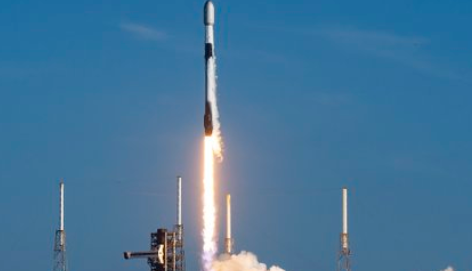If only NASA can make a deal to get Elon Musk to save the stranded astronauts, still stuck on the space station…
In the first launch of a planned weekend triple header, a Falcon 9 rocket carrying 21 Starlink satellites, including 13 equipped with direct-to-cell communication capabilities, blasted off from Cape Canaveral early Saturday. The mission was a success, as the rocket delivered its payload into orbit.
SpaceX Falcon 9 Successfully Launches 21 Starlink Satellites, Enhancing Connectivity.#tech #space#SpaceX #Falcon9 #fyp #viral pic.twitter.com/Qfz4JHPOtw
— Global Innovation (@ginnivation) August 10, 2024
This launch marked the 187th deployment of SpaceX’s Starlink internet relay satellites. These satellites are part of an ambitious plan to provide global communications services, particularly targeting high-latitude regions that traditional geosynchronous satellites do not cover.
With this latest mission, the total number of Starlink satellites launched by SpaceX has now reached 6,854. According to space statistician Jonathan McDowell, of these, 6,239 were presumed operational before Saturday’s flight. The continuous deployment of these satellites highlights SpaceX’s commitment to expanding its satellite network and enhancing internet accessibility across the globe.
The mission was significant not only for its payload but also because it marked the beginning of a busy weekend for SpaceX, which plans to execute two additional launches on Sunday. One of these will take off from the Kennedy Space Center, aiming to put another 23 Starlink satellites into orbit. The other launch will originate from Vandenberg Space Force Base in California, where SpaceX will carry Norway Space’s twin Arctic Satellite Broadband Mission relay stations into a highly elliptical orbit.
These consecutive launches are part of SpaceX’s broader strategy to strengthen its global satellite network, improving internet coverage and communication services worldwide. The integration of direct-to-cell capabilities in some of the satellites launched on Saturday underscores SpaceX’s innovation in expanding communication technology to underserved regions.
Mockup of Blue Origin’s New Glenn stands next to SpaceX’s Falcon 9 at Port Canaveral https://t.co/trFoTMTkwg
— T3SLA🌟김회장 (@Johnkim26391993) August 10, 2024
As SpaceX continues its rapid pace of satellite deployment, the implications for global internet coverage are profound. The company’s efforts could potentially revolutionize how remote and high-latitude regions access the internet, bridging gaps that have persisted for years.
SpaceX’s plans for further launches in the near future signal that this is just the beginning. The company is clearly focused on maintaining momentum, with the potential for even more groundbreaking developments in satellite technology and global communications in the coming months.
Key Point:
i. SpaceX successfully launched a Falcon 9 rocket carrying 21 Starlink satellites, with 13 equipped for direct-to-cell communication, from Cape Canaveral.
ii. This launch marks the 187th deployment of Starlink satellites, designed to enhance communication services in high-latitude regions not covered by traditional satellites.
iii. As of this launch, SpaceX has deployed a total of 6,854 Starlink satellites, with 6,239 presumed to be operational before Saturday’s mission.
iv. The company plans to execute two more launches on Sunday, one from Kennedy Space Center for an additional 23 Starlink satellites, and another from Vandenberg Space Force Base for Norway Space’s Arctic Satellite Broadband Mission.
v. These consecutive launches highlight SpaceX’s aggressive strategy to expand global internet coverage and enhance satellite-based communication capabilities.
Al Santana – Reprinted with permission of Whatfinger News

